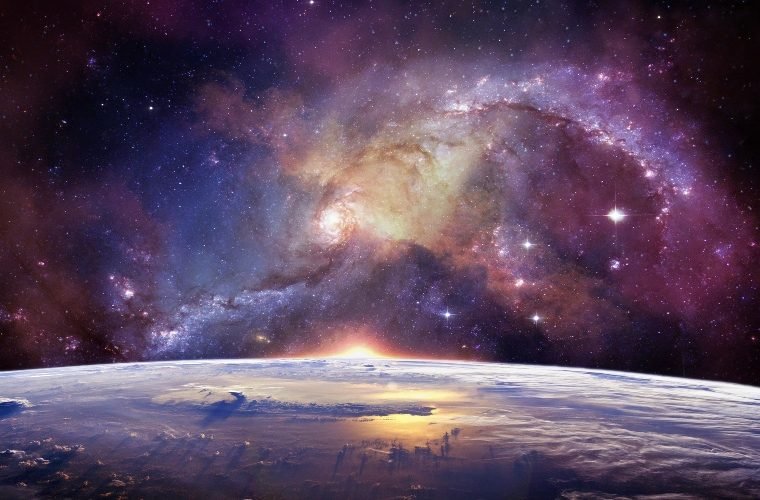It is flattering for us as humans to imagine we are rare. If there is no one as good as we are, our self-esteem gets a boost. We can secure this premise by declaring the alternative an extraordinary claim requiring extraordinary evidence, thereby allowing us to shy away from the effort required to search for evidence to the contrary.
Maintaining our ignorance is good for our ego. The most obvious manifestation of self-pride is encapsulated in the illusion of free will. If we have free will, no 3D printer can replicate us. However, all evidence supports the idea that the human brain is simply a network of 86 billion neurons with about 7 thousand synaptic connections per neuron. The wiring of the fruit fly brain with its 3 thousand neurons was entirely mapped recently and can now be simulated on a computer.
If artificial intelligence (AI) systems reach the number of connections in the human brain within a decade or two, their thought process will be as complex and unpredictable as the human mind. The combination of chaos, quantum uncertainty, and response to an undocumented environment with many degrees of freedom can fully account for the unpredictability we associate with free will.
Despite the uncertainty inherent in many-body systems, the statistical behavior of a large number of atoms is forecasted by the laws of thermodynamics and statistical physics. Similarly, the statistical behavior of a large number of people will become predictable with the advent of AI.
Going beyond the level of an individual, we also tend to believe in humanity’s central place in the cosmos. This started with the geocentric model that the Earth is at the center of the universe and continues today with the assertion that our intelligence is so rare that taxpayers’ money should not be spent on searching for duplicates of it on exoplanets. The mainstream of the astronomy community is instead focusing resources on the search for molecular signatures of microbial life in the atmospheres of exoplanets. True, microbial life emerged early on Earth, in the form of the Last Universal Common Ancestor (LUCA) about 4.2 billion years ago, whereas human intelligence surfaced in the last ~0.1% of the time that elapsed since then. However, there is a major limitation to this version of astrobiology.
The new discovery of oxygen production at the dark abyssal seafloor, where photosynthesis is impossible, has important implications for astrobiology. Given the high electric potentials available on the polymetallic nodule-covered seafloor in the Pacific Ocean, oxygen may be produced by breaking water molecules into oxygen and hydrogen through lifeless seawater electrolysis. This suggests that the Habitable World Observatory, prioritized by the National Academies report Astro2020 at a cost of 11 billion dollars to search for oxygen or methane in the atmospheres of exoplanets, might not yield unambiguous evidence for extraterrestrial life if electrolysis can occur naturally.
In contrast, if HERCULES, a video-equipped robot to be employed by the Galileo Project in its next expedition to the Pacific Ocean’s site of the interstellar meteor IM1, will recover a piece of a technological artifact manufactured by an alien civilization, the finding will not only confirm unambiguously the existence of extraterrestrial life but also the existence of extraterrestrial intelligence. This expedition will cost less than 0.06% of the Habitable World Observatory’s budget, yet it has zero chance of being funded by a federal agency. Instead, the expedition has a high likelihood of being funded by curious taxpayers who are not intimidated by gatekeepers who aim to shield academia from the public’s genuine interest in extraterrestrial intelligence.
The most extreme manifestation of the rarity argument argues that many of the unusual conditions near Earth are absolutely required for intelligent life to emerge. Obviously, by compiling a large enough set of special requirements based on one example, it is possible to get a tiny final probability of reproducing them elsewhere, ignoring the possibility that intelligent life might be far more diverse than we imagine.
This argument was formulated in terms of the “Rare Earth” hypothesis in a book by Peter Ward and Donald Brownlee, who argued that many conditions had to be “just right” in order for large multicellular animal life to develop on Earth. This includes having a Sun-like star, being at the habitable distance from the star, having an Earth-size rocky planet along with the architecture of the Solar planetary system, having the Earth’s geochemical composition – including a molten core and plate tectonics, having a large Moon, and also being at the appropriate distance from the Milky-Way center where extreme phenomena like frequent stellar explosions or black hole flares could sterilize life on an Earth-like planet. This narrative also underlines a more recent proposal that the rarity of continents, oceans, and plate tectonics on exoplanets could explain Fermi’s paradox.
Elon Musk echoed a related sentiment in a paper arguing that humanity should become a multi-planet species in order to avoid extinction from a single-point catastrophe on Earth.
My view is that before we invest 11 billion dollars in the Habitable World Observatory or much more money in transporting people to the Martian desert, we should invest tens of millions of dollars in the search for technological objects that originated outside the Solar system, a task that became feasible only over the past decade. Even our best telescopes at present can only detect the sunlight reflected from objects larger than Musk’s Starship within the Earth-Sun separation. There could be many interstellar CubeSats that we missed so far. If most of them are not functional, they only become detected through the fireball they generate as meteors if they happen to collide with Earth.
Over the past decade, the U.S. government has employed a network of satellites that routinely document fireballs in the CNEOS catalog and allow us to identify interstellar meteors like IM1. We must check whether trash from other civilizations might be among all interstellar rocks.
This makes sense but is regarded as controversial. I understand this cognitive dissonance as a reflection of the self-centered narrative that we are unique and special. It could also be a sign that we are naïve and immature out of ignorance. When my two daughters were infants, they thought that the world centered on them.
The message from the Universe is different: we are not unique or special. By now, we know that the conditions in the Earth-Sun system are possibly replicated in billions of other examples within the Milky Way galaxy, something that was not known to Ward and Brownlee when they argued that Earth is extremely rare.
If we envision only replicas that share identical freckles and scars to those we see in the mirror, we would never find them. Instead of anticipating the answer, we must invest time and money in seeking it agnostically.
When searching for interstellar visitors, we should not imagine that they are interested in us. Their trips may have started billions of years ago, long before humans ever existed on Earth.
Avi Loeb is the head of the Galileo Project, founding director of Harvard University’s – Black Hole Initiative, director of the Institute for Theory and Computation at the Harvard-Smithsonian Center for Astrophysics, and the former chair of the astronomy department at Harvard University (2011-2020). He is a former member of the President’s Council of Advisors on Science and Technology and a former chair of the Board on Physics and Astronomy of the National Academies. He is the bestselling author of “Extraterrestrial: The First Sign of Intelligent Life Beyond Earth” and a co-author of the textbook “Life in the Cosmos”, both published in 2021. His new book, titled “Interstellar”, was published in August 2023.

